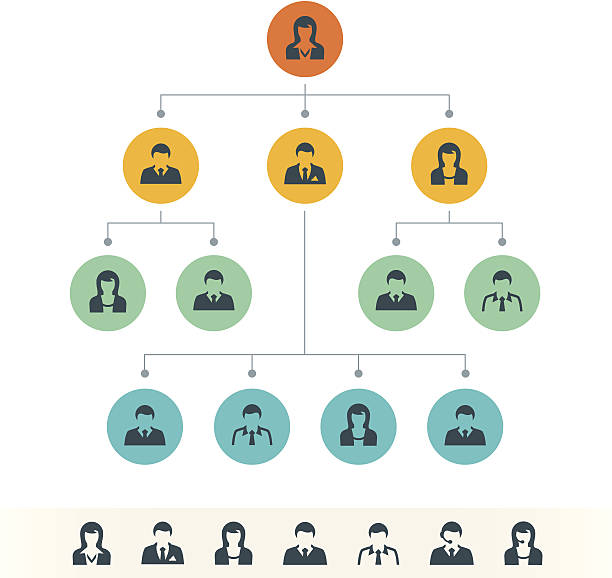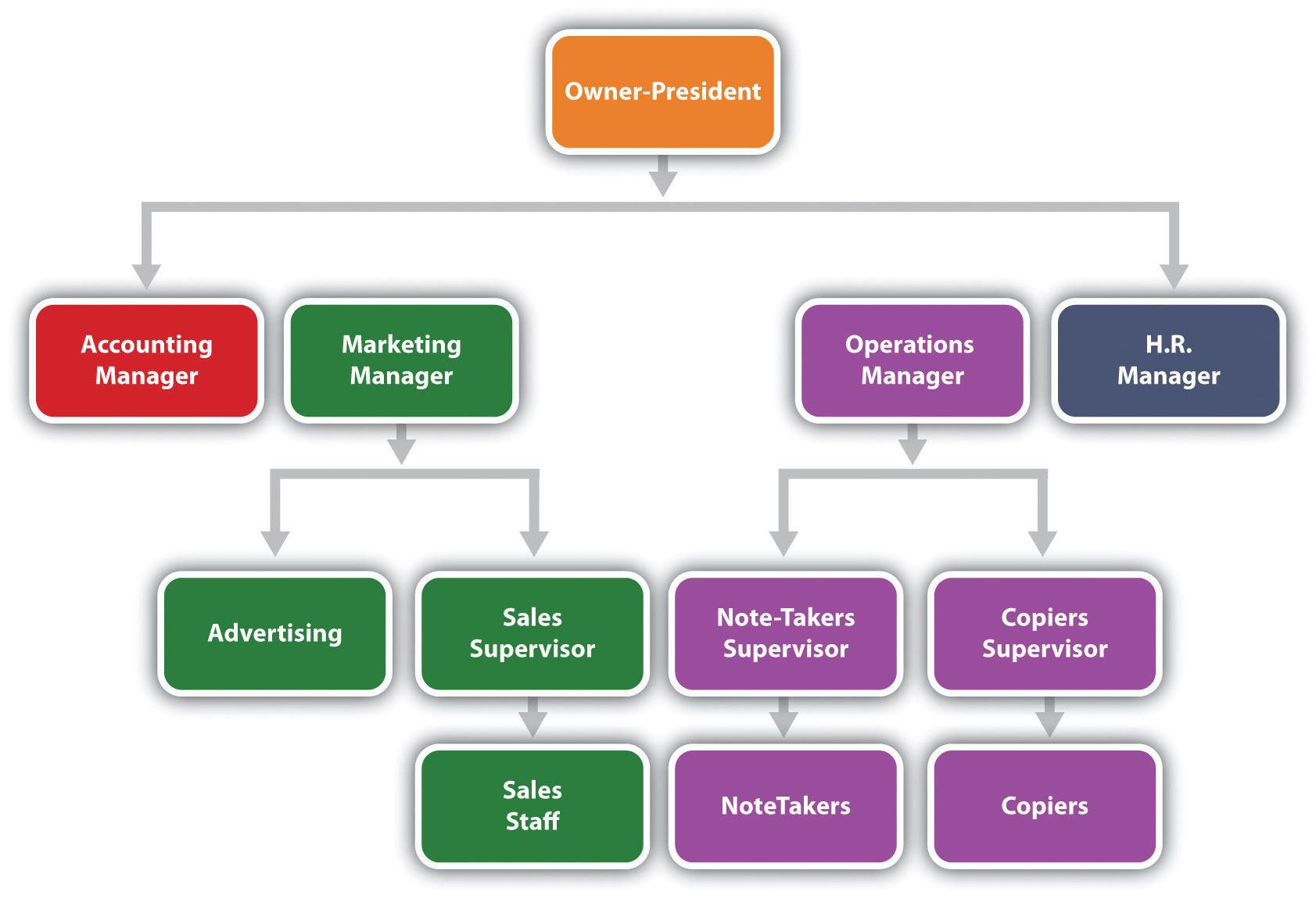
Articles
How to Read an Organizational Chart: A Comprehensive Guide

Understanding how to read an organizational chart is crucial for businesses of all sizes, as it provides a visual representation of the company's structure and reporting relationships. In this blog post, we will delve into various types of organizational charts, such as flat organizational chart, matrix chart, and functional structures.
We will also explore software tools designed specifically for creating and managing these complex hierarchical relationships. By studying the intricacies of an organizational chart, you can gain insight into how to read an organizational chart and make educated decisions concerning resource distribution.
Lastly, we'll discuss the importance of adapting your organization's structure over time in response to growth or changes in strategy. This includes revising structures during different business phases and striking a balance between flexibility and efficiency. Stay tuned for real-life examples that illustrate successful adaptation in large organizations.
How to Read an Organizational Chart
Knowing how to read an organizational chart is a critical skill for any entrepreneur, founder, manager, or operational leader. It can provide valuable insight into the structure of your business and help you identify areas where improvement may be needed.
It’s important to understand how to read an organizational chart properly to get the most out of it.

The topmost box in an organizational chart typically represents the highest level of authority within a company — the CEO or president. This person has ultimate responsibility for all decisions made by the organization and is usually supported by other executive-level personnel such as vice presidents and directors.
Beneath this top tier are boxes that represent various departments within a company, such as marketing, finance, operations, etc. These boxes will often have arrows pointing down towards them from higher up in the hierarchy indicating their relationship with more senior staff members who oversee them directly.
Each department will then have its own internal structure consisting of different roles with varying levels of responsibility and authority. For example, under “Marketing” there might be positions like “Marketing Manager” or “Content Strategist” which each come with their own unique set of duties and responsibilities that must be fulfilled in order for that department to function effectively.
As you look through an organizational chart it's important to keep an eye out for any gaps between different departments or roles that could potentially cause problems if left unchecked (e.g., lack of communication between teams). Identifying these issues early on can save time and money down the line when trying to resolve them later on!
Finally, take some time to make connections between different parts of your organization so you can better understand how they interact with one another - both horizontally (across departments) and vertically (up-down hierarchies).
Keeping this in mind, you'll master how to read an organizational chart. Doing this will give you a much clearer picture of how everything fits together which should enable you to make more informed decisions going forward!
Types of Organizational Chart Structures
There are various types of organizational chart structures that businesses can use to visually represent their internal hierarchy. These include flat organizational chart, matrix charts, divisional organizational charts, and functional or department-based structures. Understanding these different structures is essential for accurately reading an organizational chart.
Flat Org Chart: Positions Individuals on the Same Level
In a flat organizational structure, there are fewer levels between employees and top management. This type of structure encourages open communication and collaboration among team members since they all operate at the same level within the organization. Flat org charts work best in small-to-medium-sized companies where decisions need to be made quickly without going through multiple layers of approval.

Matrix Chart: Groups Individuals by Skill Sets and Reporting Lines
A matrix organizational chart combines elements from both functional (department-based) and divisional (project-focused) structures. Employees report to both a functional manager who oversees their specific skill set as well as a project manager responsible for coordinating cross-functional teams working on projects together.
Matrix org charts are often used in large organizations where resources must be shared across multiple departments or divisions. It fosters collaboration between departments and allows efficient resource allocation but requires more coordination among managers due to dual reporting lines
Functional Structure: Organized According To Functions Or Departments
In a functional organizational structure, employees are grouped by their job functions or departments, such as marketing, finance, and human resources. This organizational chart is prevalent in smaller to mid-sized businesses, where each division has its own objectives and duties. Functional structures work well when there's a clear separation between different areas within the company.
Functional Structure offers a clear division of labor and easy-to-identify reporting relationships but may lead to silos and hinder cross-departmental collaboration.
No matter which types you select — flat org chart, matrix chart, or functional structure — using organization charts software can help streamline the process of creating visually appealing charts that accurately represent your organization.
Organizational chart structures are an important tool for businesses of all sizes to visualize and manage their organizational structure. Software tools have been developed to make creating, editing, and managing org charts easier than ever before.
Software Tools for Creating Organizational Charts
Developing an organizational chart can be a challenging endeavor, particularly when attempting to stay abreast of the varying functions and obligations of a growing company. Fear not. Software exists that can make the task of creating an organizational chart much simpler.
You can streamline your company org chart creation with the world’s leading business playbook builder, Trainual. You’ll find the simple layout you need right on your account’s org chart page. And if you want to see more info for someone (like their bio, roles and responsibilities, contact info, and team) you can simply click on them to go straight to their profile.
Adapting Organizational Structure Over Time
The growth of a company often necessitates revisions in its organizational structure to accommodate changes in external environments. Companies like Nike have adopted a matrix structure where employees have multiple reporting lines across different divisions within the company. This approach allows greater flexibility but requires more coordination among managers who need to allocate resources effectively across diverse units.
Revising structures during business growth phases
As your small-to-medium-sized business expands, it's essential to reassess and adapt your org chart accordingly. A flat organizational structure may work well for smaller teams, but as you grow and add new departments or projects, you might find that a hierarchical or matrix organizational chart better suits your needs. The key is to stay agile and open-minded when it comes to updating your organization charts - after all, they're meant to support your team's efficiency and productivity.
A hierarchical structure is a traditional top-down approach that has clear reporting relationships with each employee having one direct supervisor. In a matrix structure, on the other hand, employees report to both functional managers (e.g., marketing department) and project managers simultaneously. Divisional org chart groups employees by product line or geographic region rather than function (e.g., North American sales).
Balancing flexibility with effective resource allocation
Navigating the complex and dynamic business environment can be difficult, requiring a delicate equilibrium between flexibility and effective resource management. With a matrix organizational structure, employees may feel overwhelmed by multiple reporting lines while functional managers struggle with coordinating their efforts across various projects. To combat these challenges, consider implementing regular communication channels such as weekly meetings or using collaborative org chart software to keep everyone on the same page.
In summary, don't be afraid of change. Embrace your growing business by continuously reassessing your org chart structures and making adjustments when necessary. This will ensure you're always prepared for new challenges and opportunities that come with scaling up.
Conclusion
Organizational charts are an invaluable tool for any business looking to grow and scale. By understanding the different types of organizational chart structures, utilizing software tools to create effective visuals, and adapting structure over time as needed, businesses can ensure they have a clear path forward that is both efficient and productive. Taking the time to learn how to read an organizational chart carefully can pay off in spades when it comes to streamlining processes within a company.
Sign up now for a free 7-day with Trainual and scale your business!
Similar Blog Posts







